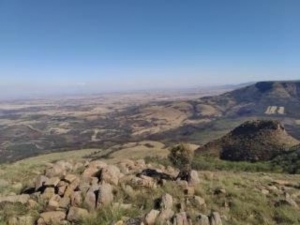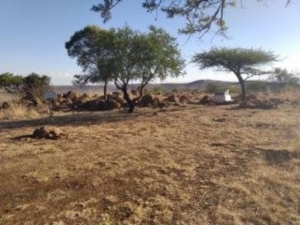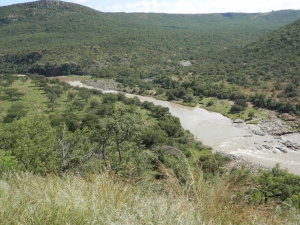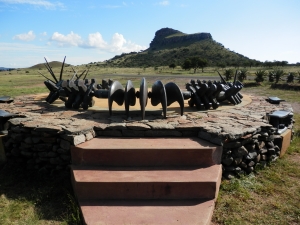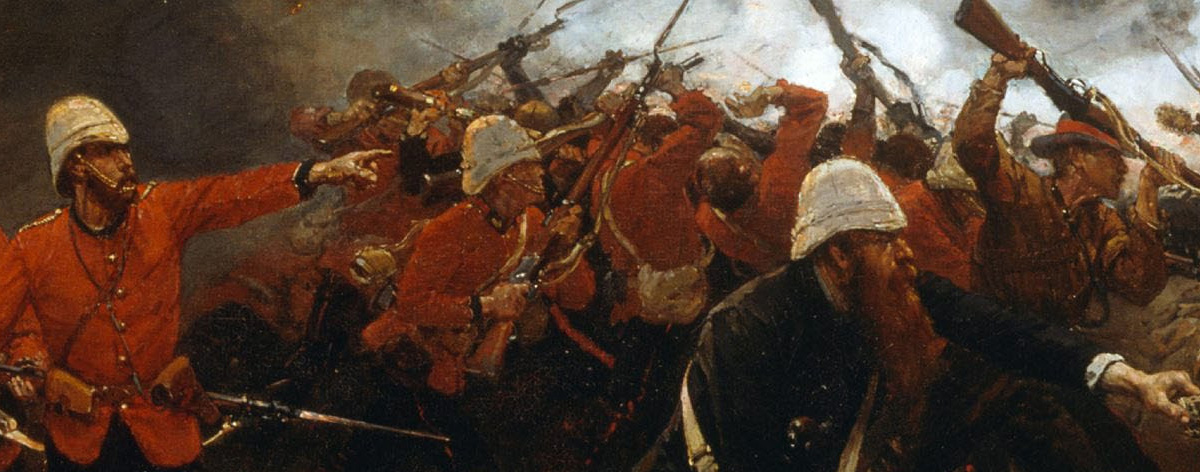
The Anglo-Zulu and Anglo-Boer Wars
The ultimate battlefield tour of South Africa
To be confirmed
The Anglo-Zulu and Anglo-Boer Wars
The ultimate battlefield tour of South Africa
Tour Introduction
By combining our Anglo-Zulu Wars and Anglo-Boer Wars tours into one trip, you will be spending three weeks visiting some of the most iconic sites and scenery the country has to offer.
Background
Please note that due to the unpredictable nature of organisational arrangements in South Africa the itinerary may be subject to change. Despite our best endeavours to deliver services to the highest standard, occasionally our suppliers are unable to meet those expectations due to circumstances beyond their control, so we ask you approach this tour with an open mind when travelling in this beautiful but challenging destination.
Highlights
• With Zulu War Historian, Ian Knight
• Climb up Majuba Hill
• Catch glimpses of Ladysmith from atop Spionkop
• Stand atop the Tugela Heights
• Explore the perimeter of the Ladysmith defences
• See where Churchill was captured and subsequently imprisoned
• Seek out the Boer positions above the Modder River
• Look down into Kimberley’s ‘Big Hole’
• Drive up to the site of the old mission station at Eshowe
• visit King Cetshwayo's grave
• Visit the battlefield and royal homestead at Ondini
• 2 night stay at the Hluhluwe Game Reserve
• Walk up the slopes of Hlobane mountain
• The battlefield of Khambula
• Two days spent hearing the full story of the battle of Isandlwana
• A full day at Rorke's Drift
• Wild African scenery; wildlife game drive
• Superb game lodge and hotel accommodation
• Visit Fort Pearson
• The Buffalo River crossing
What's Included
- 3 & 4 Star Hotels
- Return flights from London (optional)
- Tour information booklet
- Modern, comfortable, air-conditioned coach
- Internal flight(s)
- Expert historians throughout providing a daily variety of talks, presentations and Q&A
- Entrance fees for sites included in itinerary
- Dedicated Tour Manager
- Buffet breakfast each morning
- All lunches
- Dinner parties hosted by your expert historians and tour manager
- 3 Internal flights
- The company of like-minded travelers
Itinerary
Day 1 – Flights out
Overnight flight from London to Johannesburg.
The Anglo-Boer Wars
Day 2 – Praetoria
After our morning arrival at Johannesburg we drive to Praetoria for a gentle day during which we visit the State Model School, where Churchill was imprisoned, Melrose House, where the peace treaty was signed, President Paul Kruger’s House, Voortrekker Monument and Schanskop fort with its ‘Long Tom’ gun. Afternoon check-in to our Heidelberg Lodge. (L,D)
Day 3 - Transvaal Rebellion
After a morning arrival in Johannesburg we drive south to explore the battlefields of the climactic actions of the 1881 Transvaal Rebellion. Firstly at Laing’s Nek we discover how General Sir George Colley completely underestimated the 2,000 strong Boer force and was defeated. Thence onto Majuba Hill where Colley and his 550 men succumbed to a humiliating defeat, Colley himself being killed in the action. The defeat led to the Treaty of Pretoria granting independence to the South African Republic. We head onto Dundee, which changed hands twice during the Second Boer War, and check in to our hotel for the night. (B,L,D)
Day 4 - Talana and the Siege of Ladysmith
18 years after the treaty was signed, the conflict once again flared up. The opening battle of the Second Boer War was at Talana Hill where a frontal attack by the British - this time wearing khaki - succeeded, but at the cost of heavy losses. Thence to Elandslaagte, where once again the British were victorious, but retreated instead of hammering home the advantage. This would become the prelude to the siege of Ladysmith, to which we turn our attention this afternoon, visiting the dedicated museum and the actions around the defensive perimeter of Platrand and Wagon Hill. Check-in to our lodge on the edge of Ladysmith for two nights. (B,L,D)
Day 5 - The Relief Column
Today we focus on the actions of the Ladysmith relief column starting with the early failure at the Battle of Colenso where a 21,000 strong force led by General Buller were beaten back by 6,000 entrenched Boers. Buller was so badly beaten that he advocated the surrender of Ladysmith. Despite this he led a successful assault on the Thukela Heights after the disaster of Spioen Kop, which led to the siege being lifted and the tide of the war began to turn. (B,L,D)
Day 6 - Spioen Kop
Spioen Kop was the defining battle for the relief of Ladysmith and one of the most poignant British disasters of the war. After believing they had taken a commanding position atop Spioen Kop under the cover of darkness, the British were horrified to find that their position on the summit did not command the approaches. This left them completely exposed to Boer artillery fire and to an assault at close-range, and nothing short of a massacre ensued. The British force eventually left the hill beaten and bloodied after what was an all-round military disaster – although, ironically, the Boers also withdrew, believing that the British had managed to hold on. This afternoon enjoy a relaxing and scenic drive through the foothills of the Drakensburg via the Golden Gate National Park to Ladybrand for one night. (B,L,D)
Day 7 - Bloemfontein
Our first visit today is the battlefield of Sannah's Post which was one of the first actions of the guerrilla war. In a perfectly executed ambush, the Boers inflicted heavy losses and secured access to Bloemfontein’s water works, aggravating an epidemic of enteric fever dysentery and cholera among the occupying British army. We head into the Free State capital of Bloemfontein and visit The Emily Hobhouse Museum. Emily Hobhouse was a remarkable woman who performed crucial relief work at the concentration camps despite fierce opposition from her own countrymen. We head to our accommodation in Kimberley for our last three nights. (B,L,D)
Day 8 - Kimberley relief column
Today is spent following these actions including the battle of Modder River, where the Boers managed to delay the strong British force on their way to Kimberley but were ultimately unsuccessful and retreated to Magersfontein, where they dug in and successfully repulsed a frontal attack two weeks later. At the Magersfontein Museum, we can see some preserved Boer trenches and explore the recently renovated exhibition. We end the day with the battle of Paardeberg, which actually took place after the relief of Kimberley. Blocking the Boers’ route to the Modder River, Kitchener led a poorly executed assault and was repulsed. A siege followed and the Boers, under Cronjé, were starved into surrender. (B,L,D)
Day 9 - The relief of Kimberley
The siege of the diamond mining town of Kimberley lasted for 124 days and, although ill prepared, the inhabitants’ and garrison’s improvised defence held out. We hear of the trials and tribulations of living under siege and visit the Kimberley Museum. We then head to the ‘Big Hole’, the remnant of an open Diamond Mine that claims to be the largest ever excavated by hand - an incredibly impressive site! This afternoon is free for you to relax and explore at your leisure. (B,L)
Day 10 – Johannesburg & Home
Morning flight from Kimberley to Johannesburg. Visit South African Museum of Military History. Overnight at Johannesburg airport hotel (B,L,D)
The Anglo-Zulu Wars
Day 11 – Durban
Fly Johannesburg to Durban. This day is a light introduction to the war in the coastal districts - we visit the site of Fort Pearson, a large earthwork built by the British on a bluff to command the crossing over the Tugela River. This was the anchor for British operations in the area in 1879, but also offers a stunning view across countryside fought over in two earlier Zulu battles. Below Fort Pearson is the grove of trees where once the 'Ultimatum Tree' stood - the tree under which British representatives presented an ultimatum to the Zulus which resulted in the invasion. Overnight in Prince’s Grant on the Indian Ocean Coast, with time for a brief reflection on the arrival of the first British adventurers to arrive in the area in 1824. (B,L,D)
Day 12 – The Battlefields of Gingindlovu and Nyezane
Today we will look at the operations of Col. Pearson's Right Flank (coastal column). We will follow the line of his advance towards the old mission station at Eshowe, stopping to explore the two battles which framed his campaign (Gingindlovu and Nyezane). We will look at the remains of the Eshowe mission, where Pearson was cut off for three months in 1879 - and visit the poignant cemetery nearby. Lunch at Eshowe and a visit to Fort Nongqayi historical museum and complex. Check-in to our lodge in Eshowe for two nights. (B,L,D)
Day 13 - Cetshwayo
We drive deep into some of the more remote parts of Zulu country to visit the grave of King Cetshwayo (whom the British invasion deposed), and for an overview of the last major Zulu uprising, the 1906 Rebellion, much of which occurred in the vicinity of the grave. (B.L.D)
Day 14 - Ulundi, the final battle of the Zulu War
We leave the Eshowe area and head towards Ulundi and the old Zulu heartland. Here we explore the museum and partially recreated royal homestead of King Cetshwayo at oNdini, and visit the Ulundi battlefield, site of the final battle of the war. Picnic lunch before moving on to Hluhluwe Game Reserve, our base for the next two nights (B,L,D)
Day 15 – Hluhluwe Game Drive
A relaxing and yet exciting day as we join Hluhluwe Park Game Rangers in open game drive safari vehicles to go in search of the ‘big five’: lion, leopard, rhinoceros, elephant and buffalo. And we might even catch a glimpse of a cheetah and wild dogs. (B,L,D)
Day 16 – Hlobane Mountain
If you are fit enough and the weather permits we will walk up the slopes of Hlobane mountain (n.b. this is potentially a stiff walk and the tracks are deteriorating) to hear how a British mounted foray was driven off with heavy losses. We will visit the graves of Captain Campbell and Civilian Interpreter Lloyd, two of Wood's aides who were killed in the battle, and whose remains lie high up on the hillside, Check-in to our lodge in Vryheid for two nights. (B,L,D)
Day 17 - Ntombe Spruit
We drive out to the little-known battlefield of Ntombe where, in March 1879, a convoy of the 80th Regiment was attacked and over-run. The state of the river permitting, we wade across the stream and explore both sides. (B,L,D)
Day 18 – Khambula, Blood River & Prince Imperial
This morning we explore the battlefield of Khambula, the turning point of the war. Here, the same Zulu regiments who had triumphed earlier in the war at Isandlwana, and who were encouraged by the Zulu success at Hlobane the day before, attacked Col. Wood's fortified camp at Khambula. Thence to the Voortrekker Blood River battlefield - where the Boers defeated the Zulus in 1838, and which boasts a truly spectacular monument - to the lonely memorial which commemorates the spot where Prince Louis Napoleon, the Prince Imperial of France - the last legitimate heir to to the Bonaparte throne - was killed in a skirmish. On then to Isandlwana/Rorkes Drift area for a 4-night stay at the wonderfully sited Isandlwana Lodge, which overlooks the battlefield. (B,L,D)
Days 19 - Battle of Isandlwana
The first of two days exploring the dramatic Isandlwana campaign in detail. We will drive out to the Ngwebeni valley, where the Zulu army bivouacked before the battle, and where they were discovered by a British patrol. We will then consider the battle from the commanding knoll where the Zulu generals directed their forces. From there we will go to the battlefield itself. We will explore the monuments and hear the story of the fighting from the British perspective - we will then walk out to the British firing lines, and down to the donga defended by Col. Durnford. (B,L,D)
Day 20 - Battle of Isandlwana
For those of you fit and willing, we will walk as much of the 'fugitives' trail' as possible, exploring the many British graves lying behind iSandlwana, on the road to Rorke's Drift (those who prefer can spend the morning at leisure in the lodge). After lunch we will drive round to the Natal side of the river to visit the graves of Lts. Melvill and Coghill, who were killed attempting to save the Queen's Colour of the 24th Regiment (NB; this is available to both those who have done the walk and those who chose not to). We will also drive out to the hills where Lord Chelmsford spent the day of the battle, away from the camp, and hear the story of his return. (B,L,D)
Day 21 - Rorke’s Drift
A full day at the famous battlefield of Rorke's Drift - and there is much to see! We begin down at the Mzinyathi (Buffalo) River crossing, where the British invasion on this front began, and then visit the mission station for Ian's climactic talk of the tour, the story of the battle. No less than 11 Victoria Crosses were won in the action, and it was the subject of the famous 1964 film, 'Zulu' - there will be plenty of opportunity to discuss the myth and realities of the story! After lunch there will be time to explore the on-site museum, and to wander the battlefield at leisure. (B,L,D)
Day 22 – Johannesburg
Our last day - we return by coach to Johannesburg with a picnic lunch en-route. Overnight return flight to London. (B,L)
Day 23 – Home
Early morning arrival at London Heathrow.

